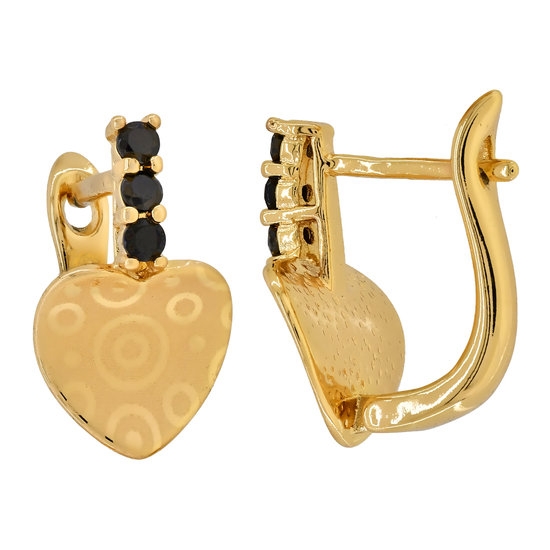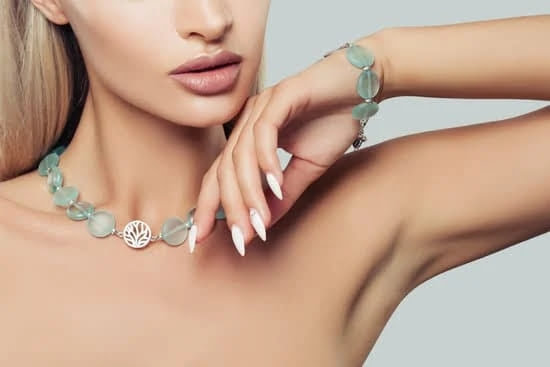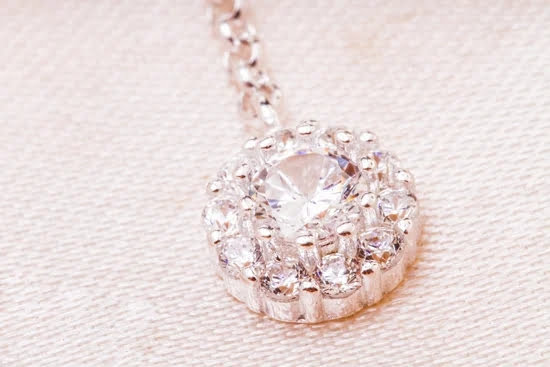Diamonds have captivated humanity for centuries with their mesmerizing brilliance and eternal allure. Among the Four Cs – cut, color, clarity, and carat weight – the diamond’s cut plays a crucial role in determining its overall beauty and value. In this article, we will delve into the fascinating world of diamond cutting and explore why it is essential to understand its significance when selecting jewelry.
The art of diamond cutting dates back thousands of years and has evolved to become a precise scientific process combined with the craftsmanship of skilled artisans. Unveiling the Artistry Behind Diamond Cutting: A Brief History section delves into how this art form developed over time. From ancient civilizations to modern technology-driven techniques, we will journey through time to unveil the secrets behind unlocking a diamond’s potential for breathtaking radiance.
However, while the history may be intriguing, understanding the science behind diamond cutting is equally important. The Science of Diamond Cutting: Exploring the Anatomy of a Brilliant Cut section will take a closer look at the intricate facets and angles that are carefully calculated to optimize light reflection within a diamond. By comprehending these details, you will not only enhance your appreciation for this meticulous craft but also gain insights into how it impacts a diamond’s sparkle.
Intrigued by what determines a diamond’s quality? Factors Influencing a Diamond’s Cut Grade: What Determines its Quality? section sheds light on various aspects that impact a diamond’s cut grade. From proportions to symmetry and polish, we will explore how each criterion contributes to assessing the overall quality and value of a diamond. Whether you are an aspiring jewelry connoisseur or someone looking to make an informed purchase decision, understanding these factors is crucial in identifying exceptional pieces.
Unveiling the Artistry Behind Diamond Cutting
The art of diamond cutting dates back centuries and has evolved significantly over time. This section will explore the fascinating history of diamond cutting, from its humble beginnings to the intricate techniques used today.
Early Origins and Development
Diamond cutting can be traced back to ancient civilizations such as India and Ancient Rome. In India, diamonds were regarded as sacred symbols of power and prosperity. The earliest form of diamond cutting involved polishing rough diamonds into various shapes using natural materials like sand and leather.
During the 14th century in Europe, diamond cutting began to take shape as a skilled craft. It was during this era that craftsmen started experimenting with different techniques to enhance the brilliance and sparkle of these precious gemstones.
The Renaissance Period: A Turning Point
The Renaissance period marked a significant turning point in the artistry of diamond cutting. Around the 16th century, new innovations emerged, such as the invention of faceting by Flemish diamond cutters. Faceted cuts allowed for maximum light reflection and dispersion, creating unprecedented brilliance in diamonds.
One noteworthy figure during this time was Lodewyk van Bercken, a renowned diamond cutter who introduced groundbreaking techniques like symmetrical faceting. His expertise revolutionized diamond cutting, paving the way for further advancements in the craft.
Modern Diamond Cutting Techniques
In modern times, technology has played a crucial role in shaping the artistry behind diamond cutting. Today’s sophisticated tools and equipment allow craftsmen to achieve precision cuts never before thought possible.
Computer-aided design (CAD) technology has also paved the way for innovative designs and custom cuts that push the boundaries of traditional diamond shapes. With CAD software, designers can create intricate patterns and unique facets that enhance a diamond’s beauty even further.
The Science of Diamond Cutting
A brilliant cut diamond is one of the most popular and classic choices when it comes to jewelry. The science behind diamond cutting involves a meticulous process that aims to bring out the maximum brilliance and sparkle in the stone.
The anatomy of a brilliant cut diamond is comprised of several key elements. First, there is the table, which is the flat top surface of the diamond. This is followed by the crown, which is the upper part of the diamond above the girdle. The crown includes facets such as bezel facets, star facets, and upper girdle facets.
Next is the girdle, which is the outer edge or circumference of the diamond. The pavilion refers to the lower part of the diamond below the girdle, and it includes facets like lower girdle facets and pavilion mains. Finally, there is the culet, which is a small facet at the bottom tip of most diamonds.
Each facet and angle on a brilliant cut diamond plays a crucial role in determining how light interacts with and reflects within the stone. Light enters through the table and then bounces off each facet before exiting back through either the table or crown depending on its path. The angles at which these facets are placed are carefully calculated to maximize light reflection.
To achieve optimal brilliance and fire in a brilliant cut diamond, certain proportions must be met. For example, if a diamond’s pavilion angle is too steep or shallow, light will leak out from either side instead of reflecting back up through its top surface. Similarly, if a diamond’s table size is too large or small, light that enters can escape rather than being reflected back up.
It’s important to note that not all diamonds are perfectly proportioned according to ideal standards for brilliant cuts. Some may deviate slightly due to factors such as carat weight considerations or individual design choices by jewelers. However, understanding these proportions can still give consumers valuable insights into a diamond’s potential for brilliance.
It is fascinating to delve into the scientific aspects of diamond cutting and how it enhances the beauty of jewelry. The precision and craftsmanship involved in creating the perfect brilliant cut highlight the intricate connection between science, artistry, and beauty. When shopping for diamond jewelry, having knowledge about these details can help consumers make informed decisions and appreciate the brilliance that a well-cut diamond offers.
| Component | Description |
|---|---|
| Table | The flat top surface of the diamond. |
| Crown | The upper part of the diamond above the girdle. It includes facets such as bezel facets, star facets, and upper girdle facets. |
| Girdle | The outer edge or circumference of the diamond. |
| Pavilion | The lower part of the diamond below the girdle. It includes facets like lower girdle facets and pavilion mains. |
| Culet | A small facet at the bottom tip of most diamonds. |
Factors Influencing a Diamond’s Cut Grade
Proportions
One of the key factors that determine a diamond’s cut grade is its proportions. The proportions of a diamond refer to the relationship between various measurements, including the angle and depth of the facets. When these proportions are well-balanced, they allow for optimal light performance and maximize the diamond’s sparkle and brilliance. On the other hand, poorly proportioned diamonds may result in light leakage or areas of darkness, diminishing their overall beauty.
Symmetry
Symmetry plays a vital role in determining the cut grade of a diamond. Symmetrical facets ensure that light enters and reflects evenly throughout the stone, resulting in a dazzling display of sparkle. An excellent symmetry grade indicates that each facet aligns precisely with its counterpart, enhancing the overall appearance and fire of the diamond. Conversely, diamonds with lower symmetry grades may have misaligned facets or irregular shapes, leading to reduced light performance.
Polish
The polish of a diamond refers to how smooth and well-finished its surface is. A high-quality polish ensures that light can enter and exit the stone without obstruction, maximizing its brilliance. Diamonds with excellent polish grades exhibit minimal blemishes or scratches on their surfaces, allowing for optimal light reflection and refraction. Conversely, diamonds with poor polish grades may have visible marks or rough surfaces that hinder their ability to reflect light effectively.
It is important to note that while these factors contribute significantly to a diamond’s cut grade, they do not solely determine its overall quality. Cut grade is just one aspect to consider when evaluating a diamond’s worth; it should be examined alongside other factors such as carat weight, color, and clarity to make an informed jewelry purchase.
Popular Diamond Cuts
One of the most important aspects of a diamond’s beauty is its cut. The cut determines how well a diamond interacts with light, giving it that dazzling sparkle we all love. There are various popular diamond cuts that have been developed over the years, each with its own unique characteristics and allure.
Round Brilliant Cut
One of the most classic and popular diamond cuts is the round brilliant cut. It is known for its unparalleled brilliance and fire, making it an ideal choice for engagement rings. The round brilliant cut consists of 58 facets, carefully arranged to maximize light reflection and refraction within the stone. This results in a breathtaking display of sparkle and scintillation.
Princess Cut
The princess cut is another beloved diamond shape that has gained popularity over the years. It features a square or rectangular shape with pointed corners, offering a combination of brilliance and modern elegance. With its clean lines and sharp angles, the princess cut stands out as a contemporary choice for engagement rings or other jewelry pieces.
Emerald Cut
The emerald cut is characterized by its long, rectangular shape with clipped corners. Unlike other cuts that prioritize brilliance, the emerald cut focuses on showcasing the stone’s clarity and natural beauty. The step-cut faceting style highlights the gem’s large open table and elongated silhouette, perfect for those seeking understated sophistication.
Cushion Cut
The cushion cut is admired for its vintage charm and romantic appeal. Its shape can range from square to rectangular with rounded corners, resembling a pillow or cushion (hence its name). This particular cut dates back to the 19th century and was once one of the most popular choices for engagement rings due to its soft edges and gentle sparkle.
Marquise Cut
The marquise cut, also known as the navette cut, is distinctive with its elongated shape and pointed ends. Legend has it that King Louis XV of France commissioned a diamond to be cut to resemble the smile of his mistress, Jean Antoinette Poisson, Marchioness de Pompadour. Since then, the marquise cut has been associated with elegance and royal charm.
Whether you prefer the brilliance of a round brilliant cut or the modern edge of a princess cut, each diamond shape offers its own unique beauty. It’s important to consider personal preferences and individual styles when choosing a diamond cut. Ultimately, the perfect diamond cut is one that brings joy and captures the essence of your personality.
The Impact of Diamond Cut on Light Performance
The brilliance and sparkle of a diamond are directly linked to its cut. While many people believe that the size of a diamond is what matters most, it is actually the quality of the cut that has the greatest impact on its light performance.
The cut of a diamond refers to how well it has been crafted by a skilled gemologist. It involves carefully shaping and proportioning the facets to maximize the amount of light that enters and reflects out of the stone. A well-cut diamond will have each facet angled and positioned precisely to achieve optimal brilliance, fire, and scintillation.
One important aspect of a diamond’s cut is its depth percentage and table percentage. The depth percentage refers to how deep or shallow the diamond is in relation to its width. A shallow cut can cause light to leak out from the bottom, resulting in a dull appearance. On the other hand, a deep cut can cause light to be reflected back through the top rather than bouncing off the facets, leading to less brilliance.
Meanwhile, the table percentage measures the size of the flat top facet relative to the diameter of the diamond. If this facet is too small or too large, it can negatively impact how light interacts with the stone. The ideal table percentage depends on the specific shape and cut style, so it is essential for buyers to be aware of these factors when selecting a diamond.
In addition to these considerations, other aspects such as symmetry, polish, and alignment also play significant roles in determining how well a diamond will shine. When evaluating a diamond’s cut grade, experts take all these factors into account to determine whether it falls into categories such as excellent, very good, good or fair/poor.
| Aspect | Description |
|---|---|
| Depth Percentage | The depth or shallowness of the diamond in relation to its width |
| Table Percentage | The size of the flat top facet relative to the diameter of the diamond |
| Symmetry and Alignment | The precision and balance of the facets and angles in a diamond’s cut |
| Polish | The smoothness and surface quality of a diamond’s facets |
Expert Tips on Evaluating Diamond Cuts
When it comes to purchasing diamond jewelry, evaluating the cut of the diamonds is crucial in making an informed decision. The cut of a diamond refers to its proportions, symmetry, and facets, which ultimately determine its ability to reflect light and sparkle. To help you navigate through the process of evaluating diamond cuts, here are some expert tips:
- Understand the 4Cs: Before diving into evaluating the cut, it’s important to understand the other three factors that contribute to a diamond’s overall quality – carat weight, color, and clarity. Familiarize yourself with the 4Cs so that you can have a holistic view of a diamond’s value before focusing on its cut.
- Look for the GIA Certificate: The Gemological Institute of America (GIA) is widely recognized as one of the most reputable grading laboratories in the world. When buying a diamond, always make sure that it comes with a GIA certificate. This document provides an objective evaluation of the diamond’s cut quality along with other important characteristics.
- Examine Diamond Proportions: A well-cut diamond will have precise proportions that maximize its brilliance and fire. Look for diamonds with excellent or very good ratings for their proportions on the GIA scale. Pay attention to factors like table size, depth percentage, and crown height as they greatly influence how light interacts with the stone.
- Focus on Cut Grade: The GIA grades a diamond’s cut quality based on how well it interacts with light – ranging from Excellent to Poor. It’s recommended to go for diamonds with excellent or very good cut grades as they offer exceptional beauty and performance.
- Consider Diamond Shape: Different diamond shapes affect how light performs within them, so consider which shape appeals most to you aesthetically while also taking into account how it affects light performance. Round brilliant cuts are known for their maximum sparkle due to their precise faceting arrangement, while other shapes like princess and emerald cuts offer a different style of brilliance.
By following these expert tips when evaluating diamond cuts, you can make more informed jewelry purchases and ensure that you are getting the most out of your investment. Keep in mind that although cut quality is highly important, personal preference should not be overlooked. Ultimately, choose a diamond that captures your heart and brings joy every time you wear it.
The Magic of Custom Diamond Cuts
Custom diamond cuts offer a unique and enchanting aspect to jewelry, allowing individuals to truly stand out with their one-of-a-kind pieces. The magic of custom diamond cuts lies in the ability to create something that perfectly reflects the wearer’s individuality while still maintaining the brilliance and beauty of a traditional diamond cut.
Crafting custom diamond cuts requires a high level of expertise and skill from experienced gemologists and diamond cutters. These professionals work closely with clients to understand their vision and desired outcome, using their knowledge of diamond cutting techniques to bring these ideas to life. The process begins with careful planning and design, ensuring that every detail is meticulously considered.
One of the main advantages of custom diamond cuts is the ability to create a piece that perfectly suits an individual’s style and personality. Whether it’s a unique shape or an intricate pattern, custom cuts allow for endless possibilities in terms of design.
This customization extends not only to the shape of the stone but also to its proportions, facets, and overall aesthetic. With a custom cut, clients can have complete control over every aspect of their jewelry, resulting in a piece that truly represents them.
Furthermore, custom diamond cuts offer exclusivity and rarity. When you opt for a custom-cut piece, you are investing in something truly special that cannot be replicated. These pieces become heirlooms that can be passed down through generations, carrying with them unique stories and memories. Custom cuts are also highly sought after by collectors who value craftsmanship and uniqueness.
In summary, the magic of custom diamond cuts lies in their ability to create stunning works of art that reflect individuality and offer exclusivity unmatched by traditional designs. With skilled craftsmanship and attention to detail, these pieces stand out as true masterpieces in the world of jewelry. Whether someone seeks a distinct engagement ring or an unforgettable statement necklace, custom-cut diamonds allow them to express their personal style while embracing the brilliance and enduring appeal of this precious gemstone.
The Future of Diamond Cutting
The field of diamond cutting has continually evolved over time, incorporating new technologies and techniques to enhance the beauty and brilliance of these precious gemstones. As we look toward the future, there are several exciting innovations and trends that are shaping the jewelry industry.
One such innovation is the use of laser technology in diamond cutting. Laser cutting allows for greater precision and accuracy, resulting in a more symmetrical and proportionate diamond. This technology also enables cutters to create intricate designs and patterns within the stone, adding a unique touch to each piece of jewelry. Laser-cut diamonds are becoming increasingly popular among consumers who appreciate the craftsmanship and attention to detail that goes into creating these stunning pieces.
Another trend on the horizon is the rise of sustainable and ethical diamond cutting practices. With increased awareness about environmental issues and human rights concerns in the mining industry, consumers are seeking out diamonds that have been responsibly sourced.
This has led to a growing demand for lab-grown diamonds, which are created through technological processes rather than being mined from the earth. These lab-grown diamonds often have superior quality, as they can be made to exact specifications, including desired colors and sizes.
In addition to sustainability, customization is also becoming a prominent trend in diamond cutting. Consumers today want jewelry that reflects their individuality and personal style. Custom diamond cuts allow for greater creativity, enabling customers to design one-of-a-kind pieces that stand out from traditional cuts like round brilliant or princess. From unconventional shapes to personalized engravings, custom-cut diamonds offer endless possibilities for jewelry enthusiasts who want something truly unique.
As we approach the future of diamond cutting, it is clear that innovation will continue to shape the industry. From advanced technologies like laser cutting to sustainable practices and customization options, these trends will provide exciting opportunities for both jewelers and consumers alike. Whether it’s creating dazzling designs or meeting ethical standards, diamond cutters will play a crucial role in meeting evolving consumer demands while preserving the enduring appeal of diamond jewelry.
Conclusion
In conclusion, the brilliance of diamond cut jewelry is truly something to be embraced and admired. Throughout history, diamond cutting has evolved from a simple process to an intricate artistry that requires skilled craftsmen and cutting-edge technology. Understanding the importance of diamond cut in jewelry is essential for making informed purchases and ensuring the highest quality.
The science behind diamond cutting reveals the anatomy of a brilliant cut, with its carefully calculated proportions and facets that maximize light performance. Factors such as symmetry, polish, and proportions all contribute to a diamond’s cut grade and overall quality. It’s not just about the size of the diamond; the cut determines how well it captures and reflects light, ultimately enhancing its brilliance and sparkle.
When evaluating diamond cuts, it is crucial to trust knowledgeable experts who can guide you in selecting the perfect piece. They can provide valuable tips on evaluating cuts based on criteria such as brightness, fire, and scintillation. By investing in well-cut diamonds, you can ensure that your jewelry will always stand out with its beautiful radiance.
Custom diamond cuts add another layer of magic to jewelry design. These unique pieces are crafted to create one-of-a-kind shapes and patterns, showcasing individuality and creativity. In recent years, innovations in technology have allowed for even greater possibilities in custom diamond cutting.
As we look towards the future of diamond cutting in the jewelry industry, it is clear that innovation will continue to shape this fascinating craft. Trends such as fancy colored diamonds and unconventional cuts are gaining popularity among consumers who seek distinctive pieces that break away from traditional norms.
In summary, embracing the brilliance of diamond cut jewelry means acknowledging its enduring appeal. The artistry behind each cut contributes to its mesmerizing beauty which has captivated humanity for centuries. By understanding the intricacies of diamond cutting, we can make informed choices when purchasing jewelry that will become cherished heirlooms for generations to come.
Frequently Asked Questions
What determines the cut of a diamond?
The cut of a diamond refers to its shape and the quality of its facets. It is determined by skilled diamond cutters who consider several factors to maximize the stone’s brilliance and fire. One key consideration is the diamond’s natural shape, known as the rough.
Cutters meticulously plan how to best utilize the rough to create a visually appealing finished stone while minimizing waste. They also take into account various criteria such as symmetry, proportions, and angles that affect the diamond’s ability to reflect light. The precision with which a diamond is cut directly impacts its overall beauty and value.
How are diamonds cut for jewelry?
When it comes to cutting diamonds for jewelry, a process known as “bruting” is commonly used. Bruting involves shaping the diamond by spinning it against another diamond at high speeds until it attains the desired shape. This process allows for intricate designs and precise cuts, enabling jewelers to create different shapes like round brilliants, princess cuts, emerald cuts, and many others.
After bruting, additional steps such as faceting are performed to refine and enhance the stone’s appearance further. Skilled craftsmen apply their expertise and artistic vision throughout the cutting process in order to achieve sparkling diamonds ready for use in various types of jewelry.
How are diamonds cut if they are so hard?
Diamonds possess exceptional hardness and durability due to their crystalline structure, making them one of the hardest materials on Earth. While this makes cutting them challenging, it can be achieved through a combination of techniques involving mechanical force and other strong abrasive materials like powdered diamonds or specialized cutting tools coated in industrial-grade diamonds called “diamond saws.”
These tools gradually remove small amounts of material from the diamond while maintaining precise angles and proportions according to the desired cut style or design specified by the cutter or jeweler. The process requires both skillful precision and patience as each facet needs to be carefully shaped without causing damage or compromising structural integrity in order to achieve optimal brilliance when light interacts with the final polished surface of the diamond.

Welcome to my jewelry blog! My name is Sarah and I am the owner of this blog.
I love making jewelry and sharing my creations with others.
So whether you’re someone who loves wearing jewelry yourself or simply enjoys learning about it, be sure to check out my blog for insightful posts on everything related to this exciting topic!





